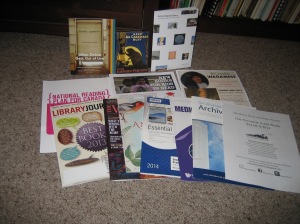Where do you even begin to discuss a magical series that inspired a generation of readers all over the world? I can’t speak for all readers, but I think that J.K. Rowling and her characters taught us a great deal about love, loss, power, and the forces of good and evil. Unfortunately, there have been many zealous attempts to keep young people from learning about these things from her novels in the very places where learning is supposed to take place: our schools.
I won’t even get into censorship attempts of the Harry Potter series in the United States, because there have been so many that I could write a graduate-level thesis on them. No wonder it’s ranked #1 on the ALA’s Top 100 Banned/Challenged Books for 2000-2009. We’ve had far too many attempts to censor Rowling’s works in Canada as is. If our country had a similar list (CLA, take note), it wouldn’t surprise me if J.K. Rowling’s beloved seven-novel series topped the rankings in the Great White North, too.
According to the Freedom to Read Challenged Works List, the year 2000 was a very hard year for poor Harry and company here in Canada. In Corner Brook, Newfoundland, a parent complained about the novels’ presence in an elementary school. As is the case almost everywhere this series has been challenged, the parent took issue with its depiction of wizardry and magic. The principal ordered that the books be removed from the school, but here’s the real kicker: Neither the parent nor the principal had ever read a single book in the series. And it’s not like they had a shortage of Harry Potter novels to inform their thinking, since four out of seven had been published by the end of 2000.
A similar complaint, with a different outcome, was made to the Durham Board of Education here in Ontario. Initially, the board decided to withdraw the books from the classrooms, but keep them in the library. However, in a hard-won battle, the board reversed its decision. Nevertheless, in some areas, like in Corner Brook and at Rockwood Public School in Pembroke, Ontario, teachers are prohibited from using the Harry Potter books in the classroom.
But alas, Harry’s trials and tribulations didn’t stop there. Two years later, in the Niagara Region here in Ontario, a parent asked the school board to remove the books from the areas’ schools, on the grounds that they contained violence and promoted Wicca. Again, had she read a single one of the books? No. Thankfully, the Niagara District School Board turned down her request.
You see, as a librarian-in-training, attempts to ban books naturally bother me – but what bothers me most of all is when people try to keep other people from having access to books without ever reading the books themselves. To me, it comes down to treating others as one would wish to be treated. You wouldn’t want some stranger to decide what you can’t read, especially when their opinion isn’t an informed one, right? So why do that to others? If a parent wants to believe that the Harry Potter series promotes Wicca, then that’s fine, so long as a) his/her opinion is an informed one, and b) that person lets intelligent young people decide for themselves what Rowling’s novels are really about.
Finally, all of this opposition to Harry Potter on the basis of its inclusion of witchcraft and wizardry assumes that those forces must be used for evil purposes (although a viewing of The Wizard of Oz would prove otherwise). Throughout the series, Harry, Ron, and Hermione combat dark magic and dangerous creatures. Souls and mortality are prominently featured. Maybe I’m missing something, but I would argue that those kinds of themes ought to appeal to Christian readers, rather than drive them away. None of the three major characters support Voldemort, the widely feared dark wizard, also known as “He who must not be named.” They don’t spend a lot of time hurting other people; in fact, a lot of their time is spent trying to avoid getting killed or keeping other people’s souls, or lives, from being taken away from them. In many ways, Harry and his friends just want to make their magical world a better place – an admirable goal, really, regardless of your religious beliefs.
LIS students and librarians: What censorship attempts of the Harry Potter series have you encountered, personally or professionally? How did you (or your employer) respond?



